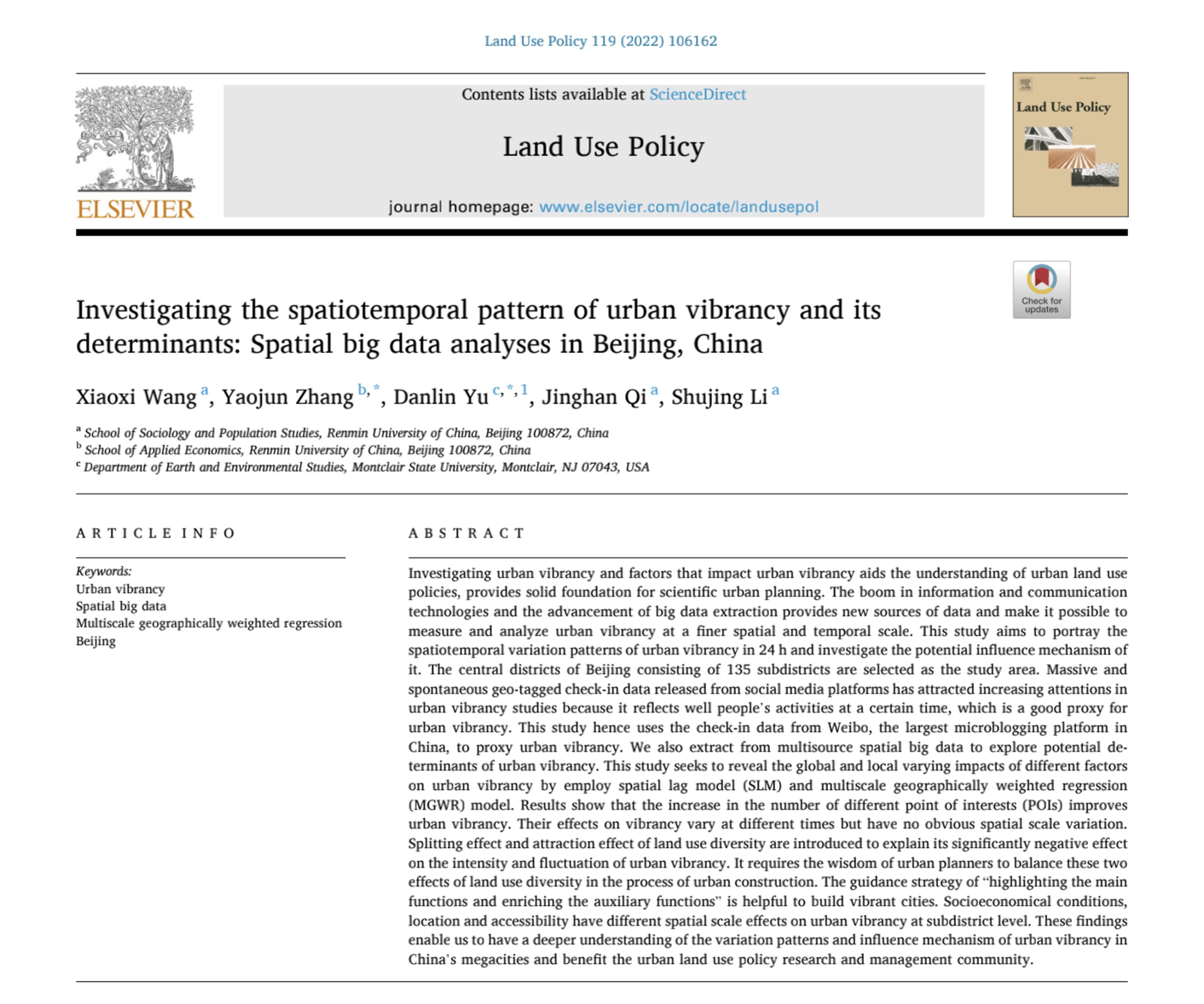Dr. Yaojun Zhang recently had a paper published in the Land Use Policy. The paper titled‘Investigating the spatiotemporal pattern of urban vibrancy and its determinants: Spatial big data analyses in Beijing, China’, was coauthored with Xiaoxi Wang,Jinhan Qi and Shujing Li from School of Sociology and Population Studies, Renmin University of China, Danlin Yu from Department of Earth and Environmental Studies, Montclair State University.

Abstract
Investigating urban vibrancy and factors that impact urban vibrancy aids the understanding of urban land use policies, provides solid foundation for scientific urban planning. The boom in information and communication technologies and the advancement of big data extraction provides new sources of data and make it possible to measure and analyze urban vibrancy at a finer spatial and temporal scale. This study aims to portray the spatiotemporal variation patterns of urban vibrancy in 24 h and investigate the potential influence mechanism of it. The central districts of Beijing consisting of 135 subdistricts are selected as the study area. Massive and spontaneous geo-tagged check-in data released from social media platforms has attracted increasing attentions in urban vibrancy studies because it reflects well people’s activities at a certain time, which is a good proxy for urban vibrancy. This study hence uses the check-in data from Weibo, the largest microblogging platform in China, to proxy urban vibrancy. We also extract from multisource spatial big data to explore potential de- terminants of urban vibrancy. This study seeks to reveal the global and local varying impacts of different factors on urban vibrancy by employ spatial lag model (SLM) and multiscale geographically weighted regression (MGWR) model. Results show that the increase in the number of different point of interests (POIs) improves urban vibrancy. Their effects on vibrancy vary at different times but have no obvious spatial scale variation. Splitting effect and attraction effect of land use diversity are introduced to explain its significantly negative effect on the intensity and fluctuation of urban vibrancy. It requires the wisdom of urban planners to balance these two effects of land use diversity in the process of urban construction. The guidance strategy of “highlighting the main functions and enriching the auxiliary functions” is helpful to build vibrant cities. Socioeconomical conditions, location and accessibility have different spatial scale effects on urban vibrancy at subdistrict level. These findings enable us to have a deeper understanding of the variation patterns and influence mechanism of urban vibrancy in China’s megacities and benefit the urban land use policy research and management community.
Other information
Publication Date:2022
Journal:Land Use Policy
Journal Issue: 119(2022)
DOI: https://doi.org/10.1016/j.landusepol.2022.106162
Read the paper here.